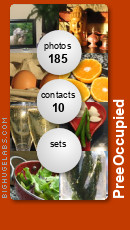Now this one was really made on the go! I had absolutely no idea which way was this recipe heading to. I had a bag of frozen, headless Pacific White prawns, a can of coconut milk from a Thai store and Indian Basmati rice, which was “Made in Texas”!
How could I possibly go wrong if I set off to make Prawn Biryani with such gourmet ingredients. The only problem was – I had no recipe or notes from my Mum to fall back on. Plus I had never had Prawn Biryani ever, so relying on my own taste buds was not an option either.
But I had the courage of my own culinary convictions. So I set out into mixing flavors and recreating some tastes, cautiously taking measured mental notes of the ingredients lest I forgot when I chronicled it for you…
Ingredients for the Prawn Biryani are:
One and half cups Basmati rice, washed, then sieved for 30 minutes
500 grams prawns/ shrimps (they were already deveined, but with shells on which I removed, so my guess is after the cleaning up, they would be about 400 gms)
One tennis ball-size red onion finely sliced
7-8 cloves of garlic
Two inch piece of root ginger
Handful of green chilies
Handful of coriander leaves
Few drops of lemon juice
One heaped teaspoon of red chili powder
One teaspoon of turmeric powder (heaped if you love turmeric)
One teaspoon of black pepper powder
One cup coconut milk (I used the thick, creamy variety)
Two tablespoons vegetable oil
Two cardamoms (green and black)
One inch stick of cinnamon
Two bay leaves
One star anise (its okay if you don’t have it)
Half teaspoon of black cumin seeds
Little piece of nutmeg grated
Salt


















































































































